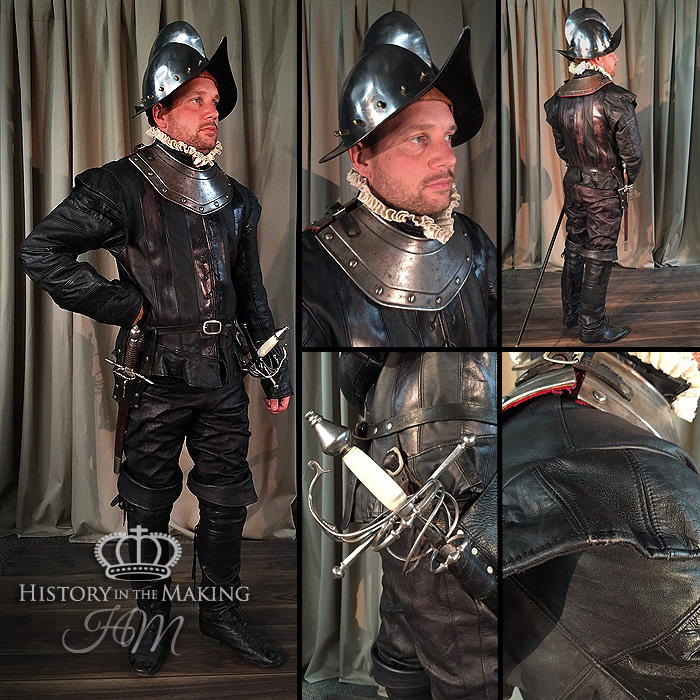
Spanish Tercios Historical armor, Medieval history, Historical warriors
This 16th-century corsair was the most feared pirate of the Mediterranean. No Spanish ships or ports were safe when dread pirate Barbarossa, ally of the powerful Ottoman Empire, sailed the high seas.

Late 16th CenturyHigh Ranking Soldier Spanish Morion and History in the Making
Spain was very definitely the dominant military power of 16th Century Europe, primarily because her troops were the only real regulars west of the Ottoman Empire—regular, that is, in the sense that they alone were permanently employed, since Spain was permanently at war.

Spanish Cavalry, Late 16th Century Ilustración militar, Caballeria, Infanteria
There are multiple 16th-century narratives of the events by Spanish conquistadors, their indigenous allies, and the defeated Aztecs. It was not solely a small contingent of Spaniards defeating the Aztec Empire but a coalition of Spanish invaders with tributaries to the Aztecs, and most especially the Aztecs' indigenous enemies and rivals.

16th Century Spanish Soldiers by Angus McBride Renegade Tribune
By the beginning of the 16th century, the dominance of the tercios symbolized the leading role of infantry on the battlefields. The end of the Medieval Age brought new technology that changed.

Spanish troops in Italy during Sixteenth century spanish and the Maestre de Camp
The 16th and 17th centuries marked the peak of Spanish power, the so-called Spanish Golden Age. Spain acquired vast empire by defeating the centralised states of the Americas, and colonising the Philippines. Her tercio units, backed by imperial gold and silver, were dominant in Europe.

Spanish Troops second half of 16th Century. L to R Officer, Sergeant and Cavalry Officer
The 16th-century Spanish historian and chronicler, Bartolomé de las Casas, reported that Becerrillo "attacked his enemies with frenzied rage and defended his friends with great courage…," adding that the indigenous people were "more afraid of ten Spanish soldiers with Becerrillo than a hundred by themselves."

Pin de Christina Ochs en Armies Tercios españoles, Conquistador, Guerreros
But why was the making of food considered a potential threat by the Spanish soldiers? During the 16th century, Spanish perceptions of female witchcraft included the idea that women could enchant the food they served men, and the consumption of this food by men enacted the woman's intended curse or enchantment. Spanish men believed that.

Pin on Histoy & Armors MedievalRenaissance
Scale models of a 16th-century Spanish galleon, left, and a rowed war galley from the period. The Spanish needed ships with the endurance of merchant vessels that could carry guns and soldiers to fend off attacks. They also needed ships that could withstand the rough weather encountered in trans-Atlantic voyages.

Spanish musketeer of the 16th century Military illustration, Conquistador, 16th century clothing
In the 16th century, they had explored the southern area of the country. For example, in Florida, the St Augustine fort was established by the Spanish in 1565. The impact of the Spanish way of understanding Roman Catholicism is evident in this region. The Spanish also influenced the economy in this area and attacked local Native Americans.

Spanish Musketeer, 1604. 16th century clothing, 17th century clothing, 16th century fashion
Tercios disembarking, 1583 During the Granada War (1482-1491), the soldiers of the Catholic Monarchs of Spain were divided into three classes: pikemen (modelled after the Swiss ), swordsmen with shields, and crossbowmen supplemented with an early firearm the arquebus. [citation needed]

Pin on english
The Pike and Shot of the Spanish Tercio. May 11, 2011. 2 mins read. The Spanish Army was transformed in the first part of the 16th century into the most formidable military force of its age. By the 14th century, infantry were gaining ascendancy over heavy horse on the battlefield. Archers and gunners were able to shoot many of them down before.

Spanish Soldier With Various Weapons and Armor, Early 16th Century Soldado español, Historia
While the process of colonization began through bloodshed, relatively few Indigenous peoples fought against Spanish soldiers. Convento San Agustín de Acolman, mid-16th century (photo: Steven Zucker, CC BY-NC-SA 2.0). Atrial Cross, convento San Agustín de Acolman, mid-16th century (now located across the street from the convento) (photo.

Pin Spanish Infantry Mid16th Century Military history, Military illustration, Historical armor
Army of Flanders Flag of the Spanish Tercios. The Army of Flanders ( Spanish: Ejército de Flandes Dutch: Leger van Vlaanderen) was a multinational army in the service of the kings of Spain that was based in the Spanish Netherlands during the 16th to 18th centuries.

Pin on Soldiers 12001700
In 1565 a conquering party led by Miguel López de Legazpi sailed across the Pacific to establish a permanent Spanish settlement in the Philippines. 1 Ever afterwards, the history of the archipelago was defined by its orientation towards the Pacific.

Spanish Infantry, Late 16th Century Spanish renaissance, Military art, Spanish armada
A morion ( Spanish: morrión) is a type of open-faced combat helmet originally from the Kingdom of Castile (Spain), [1] used from the beginning 16th to early 17th centuries, usually having a flat brim and a crest from front to back. Its introduction was contemporaneous with the exploration of North, Central and South America.

MINIATURAS MILITARES POR ALFONS CÀNOVAS UNIFORMES ESPAÑOLES Солдаты
1653-54 saw a great influx of Irish soldiers into Spain, as a result of losing the war back in Ireland to Cromwell. About 14000 went to Spain itself, but about 2300 went to Flanders. The regiment of D. Costello was one of these, with 732 men. Regiment of Kannan. Likewise entered into Flanders in 1653-54.